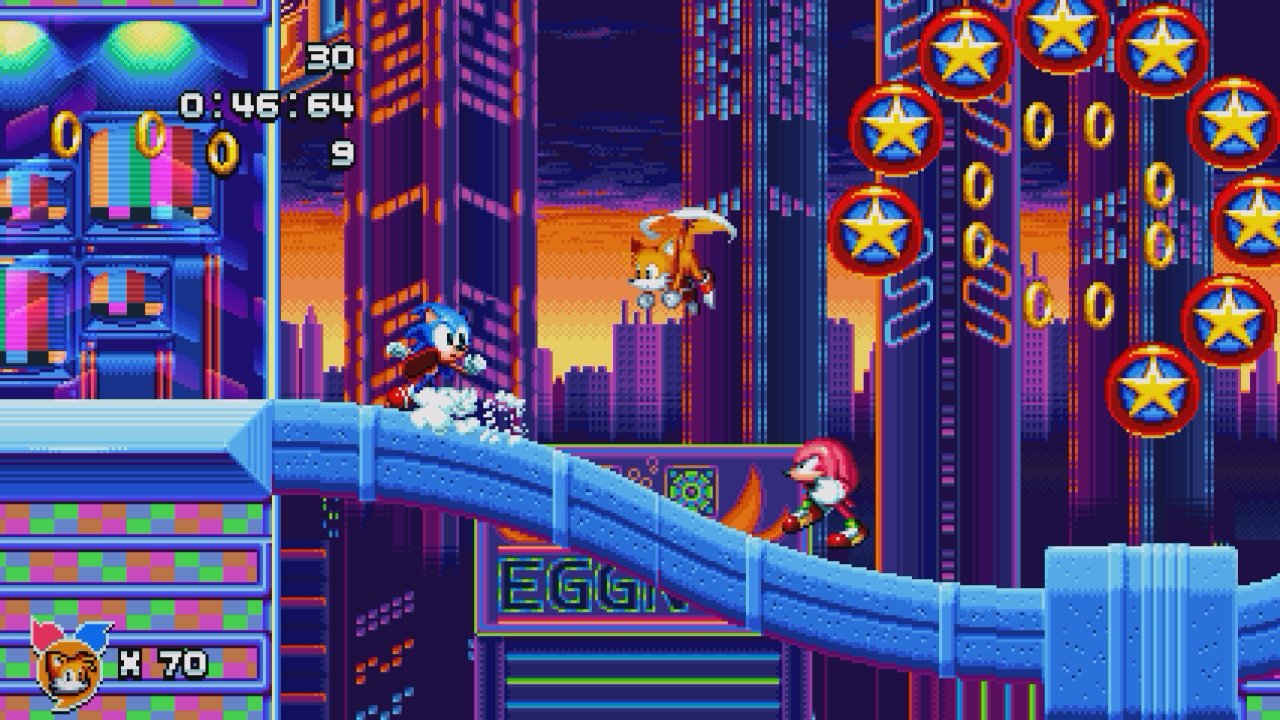
SAGE 2018: Review Slew #4
If it was any other SAGE, today’s article would have been all I’d need to write about the event, as there’s usually never more than 40 games. For us, it’s just Tuesday. Wednesday. It’s Wednesday. Oh, no.
50 games down, 38 more to go.
Sonic AGES
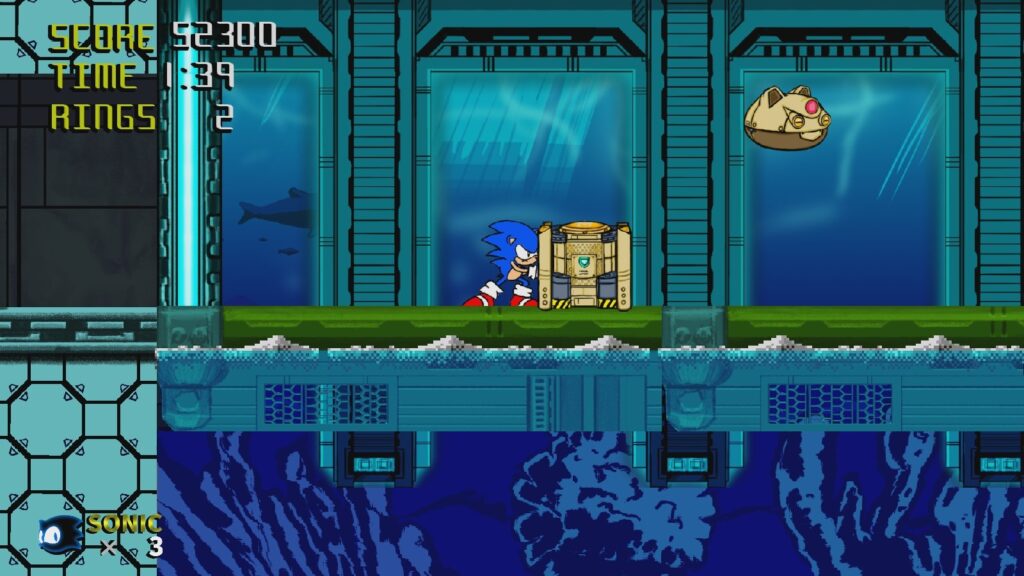
It’s good to see Sonic AGES return for another showing, but to be perfectly honest I was hoping for something a little newer. There’s one new stage: a big, repetitive Sonic Crackers version of Speed Slider, using pixel graphics and all, but that’s kind of it. There was apparently multiplayer in this build, or will eventually be multiplayer again once it gets updated, but really, there’s just not tons new to do in this demo. I know that doing a game like this can’t be easy; drawing and animating in full HD is something you probably need an entire art team for, so progress is going to be slow. But a guy can also hope, can’t he?
Sonic Project S
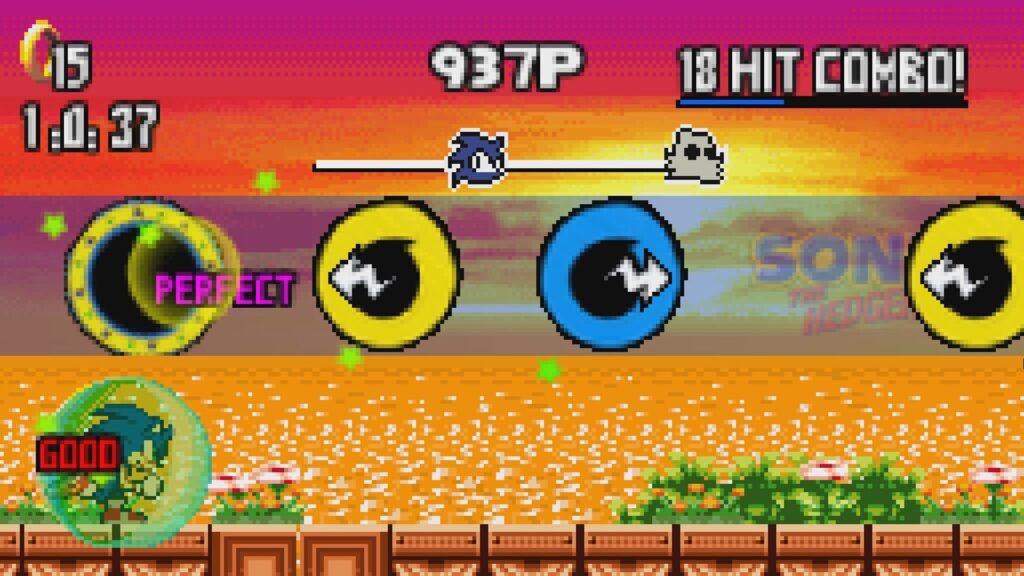
A Sonic rhythm game has seemed like an obvious prospect for a really long time now. I mean, literally, since this franchise’s inception, it has been known for having good music. Even a lot of the worst Sonic games to be released in the last 25 years have usually had a decent soundtrack. So, really, a Sonic rhythm game seems like a no brainer. And it’s kind of hard to mess up a rhythm game, too, given all you really do is match button presses to a beat. In that regard, Project S does an okay job. It takes pages from Persona Dancing All-Night, Theatrhythm Final Fantasy and even Donkey Konga to give us a pretty stylish Sonic rhythm game. I don’t want to say it’s perfect, however. Its committal to a pixel resolution betrays its beautiful art and menus. This is a game that could, and should, be seen in much higher resolutions. Second of all… well, while it is difficult to mess up a rhythm game, I don’t know if I entirely gel with the decisions made here. Inputs are very simple; you’ll mainly be pressing left and right on your desired device, with the occasional up or down thrown in to spice things up. Because you don’t have a lot to keep track of in terms of buttons, the note highway ends up moving pretty quickly. Once I’d mess up an input, I’d often miss 4-5+ notes trying to feel out the rhythm again. As a side effect of the way the note highway is set up, after as few as maybe ten or fifteen minutes of play, I could also feel eye strain setting in as I continually tracked prompts rushing across the screen, a problem I’ve never experienced with any other rhythm game before. Some of this could be alleviated with multiple difficulty settings, but what you see is what you get in Project S. Songs don’t even have difficulty ratings, so there’s no way to know how you’ll fair until you try something and fail. This is a very cool idea with a lot of style and personality, but it’s not quite there just yet.
Grand Dad Mania Revived
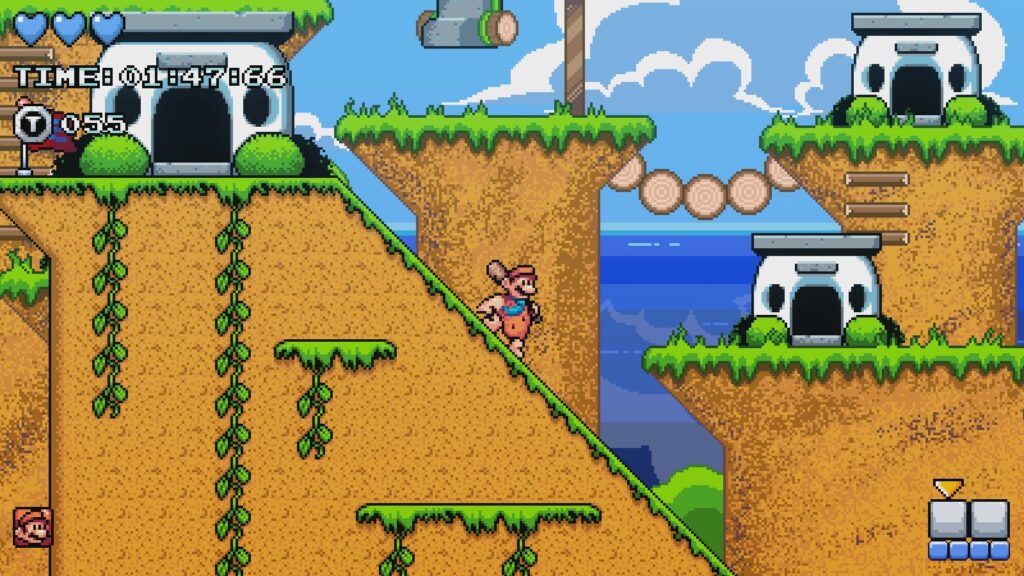
How far is too far, I wonder? The whole SiIvaGunner thing was fun for a time, but despite appearing to have supposedly “ended” multiple times, it keeps resurfacing somehow, seemingly because not everybody involved with the project knows when to let go. And, so, here we are, with Grand Dad Mania, a game based on the whole SiIvaGunner thing. This whole situation is extra double weird for me, because I grew up owning the actual original Flintstones NES game that kicked off this whole mess (The Rescue of Dino & Hoppy), and it’s odd seeing Grand Dad Mania be such a loving recreation of that gameplay… just, y’know, with Mario’s head pasted on top of Fred Flinstone’s. There are other playable characters, including a nearly-naked, racist-ish African American man that I’m sure totally isn’t racist as long as you watch a 92 minute Youtube diatribe explaining why it’s ACTUALLY totally okay. By the time I got stuck near a ledge that “Grand Dad” couldn’t grab, despite being the intended way forward, I decided I’d had enough. It’s technically well made, I guess, but it just isn’t for me.
JohnGagzProject
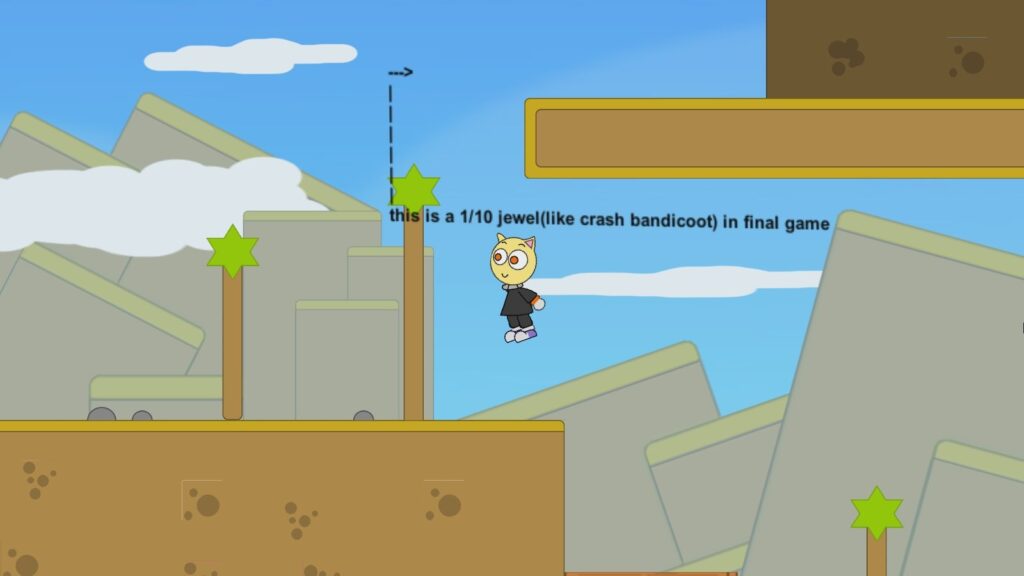
When deciding whether or not your game is ready to show at SAGE, personally speaking, there are some essential features that I think you should consider. For example, if your game is so early that there aren’t enemies, obstacles, or even a way to die, you should probably give players a button to reset them to solid ground should they fall into a bottomless pit. If you don’t add this feature, and a player falls in to a bottomless pit, they will be stuck there for eternity. It would also help if you game players a built-in way to quit your game. ALT+F4 definitely works, but not everybody knows about it, so you risk trapping your less knowledgeable players inside your game. Failure to do these things may mean that your players quickly abandon playing your game after dying only just once. Also, sound effects. Those are good too. Just saying.
Knuckles Burrow Trouble
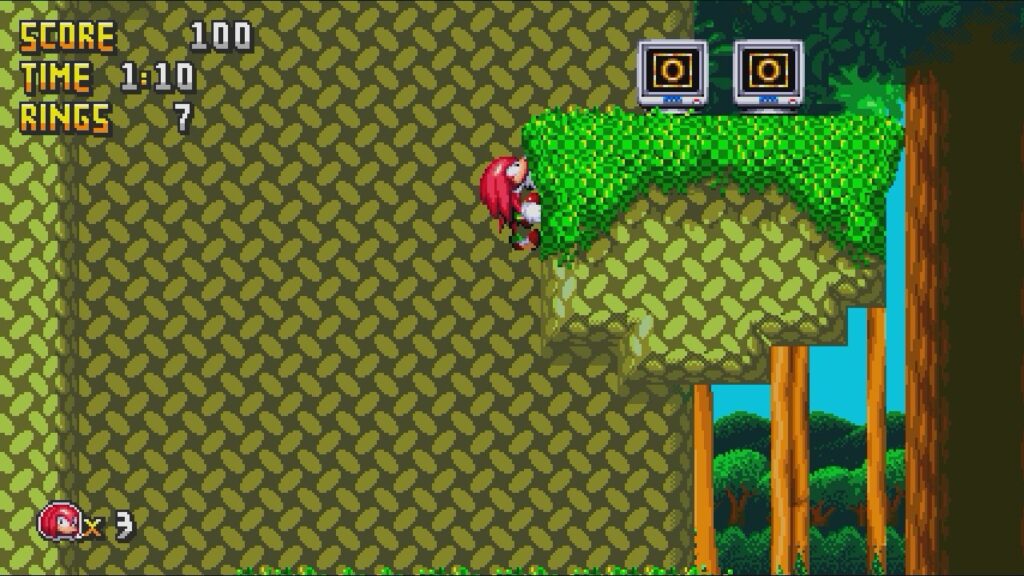
I genuinely did not know what to expect from a game called “Knuckles Burrow Trouble.” For some reason, I kept picturing the Minesweeper minigame from Sonic Battle, so discovering it was actually just a normal Genesis-styled Sonic game, this time starring Knuckles, was a rather pleasant discovery. In this demo you get Mushroom Hill Zone Act 1 to explore, and while it’s a big level… that’s kind of all you get. It plays fine, for the most part, The ground can be a little lumpy feeling in ways that I don’t think the original Mushroom Hill was, and at the very end of the stage you climb inside the axe robot that served as the first boss of the original level, but you don’t really get to do anything as it, so it ends up being kind of a disappointment. Such is the nature of the SAGE deadline, I guess.
Sonic 1 8-bit Redux
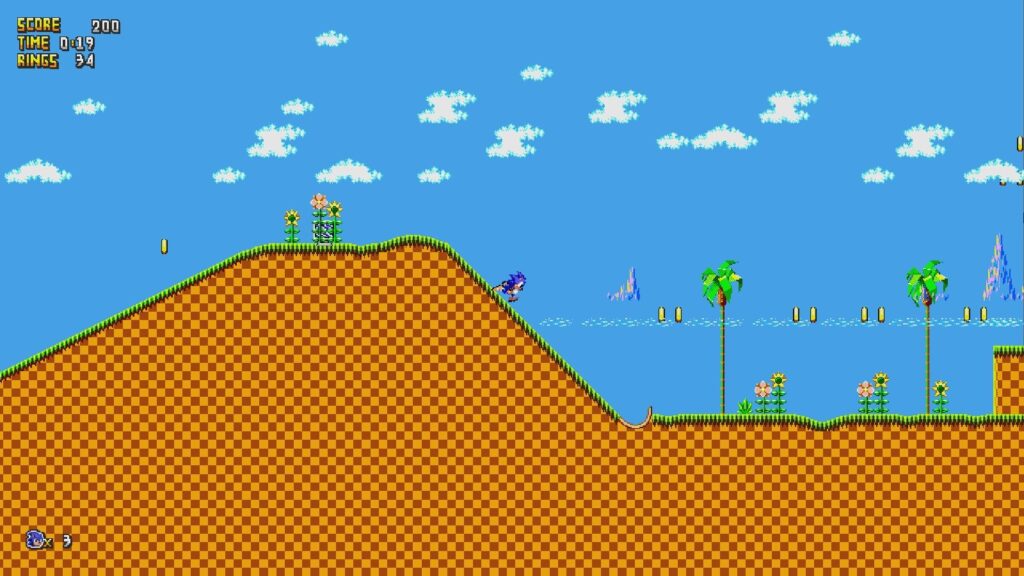
There’s been a lot of love going around for the portable Sonic games lately; I guess compared to everything else in the Sonic franchise, they are the anomaly. The console Sonic games seem to get constantly updated, referenced, and re-released, but Sonic’s portable history, particularly the Game Gear games, may as well not exist to Sega these days. 8-Bit Redux does exactly what it says on the tin: this is Sonic’s first Game Gear adventure, fed through Sonic Worlds. Unfortunately it contains a pet peeve of mine: the game runs at an absurd resolution, in spite of the tiny Game Gear graphics. Sonic looks less like a hedgehog and more like a flea at that resolution. The conversion could also use a lot of work, given things like ramps don’t work, fade out transitions are broken, there are sprite layering issues, and the score tally HUD doesn’t center properly. Rough stuff.
Sonic – Dream Plant

Games about dream logic are one of my favorite things, between classics like Kirby, NiGHTS, and Klonoa, there’s a lot of potential in dreams to push the boundaries beyond even what normally defines the “fantasy” realm. Rules are what define reality, and dreams let you break some of those rules, often just for the fun of it. But, like many powerful literary devices, it requires a careful balancing act: push too far and break too many rules and it comes across as nonsense. Somehow, this comes across in Dream Plant. There’s really no story to be told here as of yet, but the level design definitely takes on a stranger quality than you might be used to in a Sonic fan game. It’s subtle stuff, like the thin roads that fade in to nothing, or other interactive level objects suspended by nothing in the sky. Combined with an eclectic mix of enemies and an appropriately sleepy soundtrack, and you’ve got my attention.
Sonic & Tails
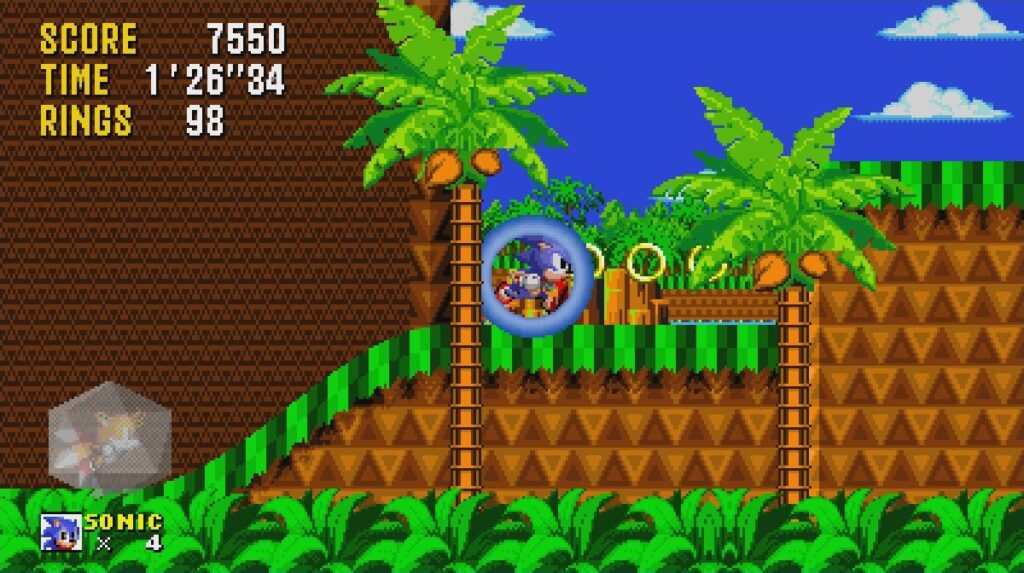
Here’s an oddity you don’t see very much of — a Sonic fan game that’s clearly referencing the Sonic CD aesthetic without blatantly trying to copy Sonic CD’s time travel mechanic. Instead, it’s just a good Sonic fan game about… well, Sonic and Tails. What makes this game are the little details, like running past trees and pulling down some leaves, or finding rings embedded in a wall you can’t collect like Sonic CD had (are we sure this game doesn’t have time travel?), or how, at one part of the level, a tiny little gnat found Sonic and started buzzing around his face. None of this serves any gameplay purpose, but it does give them game a memorable sense of personality beyond “gotta go fast.” The only thing that seems to bother me is that Tails has a mind of his own — to the point where suddenly I discovered he had collected a completely different shield than I had. I have no idea where he found it, only that he had it and I didn’t. It would be nice if things like that, when collected by the CPU, propagated to both of us.
Sonic Mania Heroes
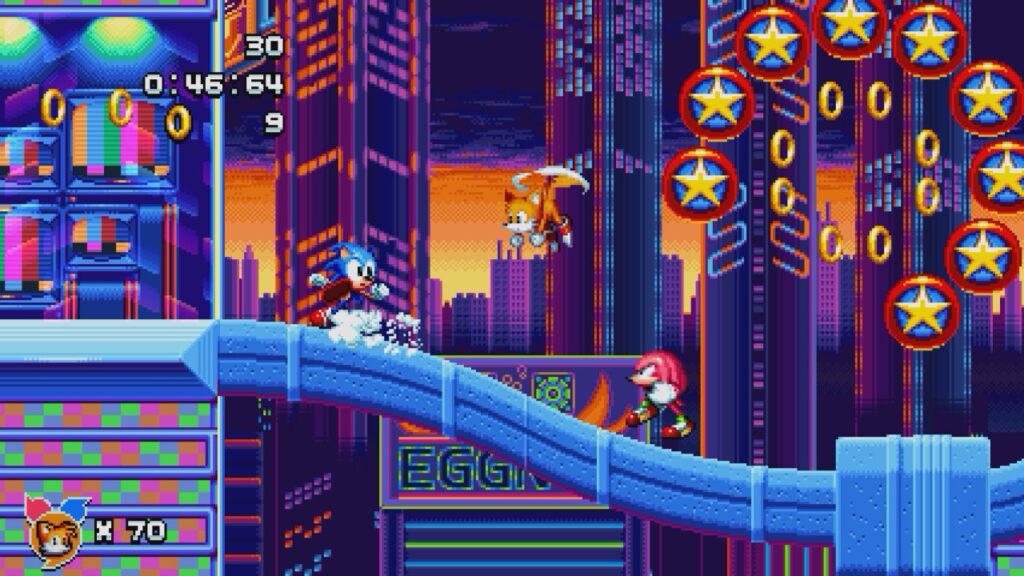
This is another one of those “does what it says on the tin” games. This transplants the Sonic Heroes three-character system in to Sonic Mania. That’s all. As near as I can tell, it doesn’t change any of the levels, it doesn’t add any new power-ups, abilities, or anything like that. It just gives you the ability to switch between Sonic, Tails and Knuckles at a whim. Now, obviously, the game wasn’t designed for this. You’ll often discover that your followers will sort of blend together sometimes, or one will get lost entirely. Frequently a character will get stuck off screen and jump repeatedly, forever. And then there’s the issue of how to switch characters — you have to crouch and push the same button you use to transform into Super Sonic. If you’ve unlocked Super Sonic, that seems to complicate matters, as once I transformed, it seemed like I could no longer switch characters. This is currently listed as a preview build, so it’s definitely not final by any means, which means I’m sure most of this stuff will get ironed out in the future.
Sonic Battle R
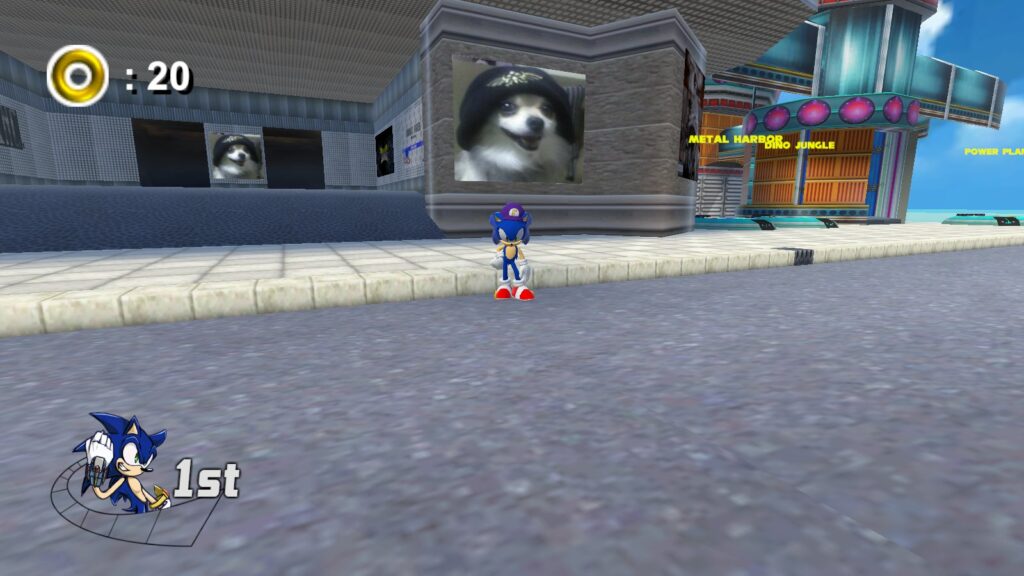
Here’s a cool idea: an online, multiplayer Sonic game where you aren’t in cars, you aren’t in race circuits, you’re just racing to the end of normal Sonic the Hedgehog levels ported from other games. Unfortunately, Sonic Battle R (which I should note its main menu claims is actually called “Sonic Adventure Battle Racers”) is held together by chewing gum and duct tape. There’s no lobby system or server browser, only direct connection, which makes some amount of sense, I guess, given those things would cost money to operate. Character customization is either severely lacking or broken, given most of the options are unresponsive. Controls are passable but not outstanding — particularly the keyboard and mouse controls, which are springy and weird, but manageable. It’s the quality of the level ports themselves that are the real culprits here; everything has been squeezed in to working with whatever HedgePhysics supports out of the box, which isn’t much. Things like ramps, rockets, and most scripted triggers are ignored. There’s one single lone enemy type — the GUN Beetle. One of the ported levels is Dino Jungle from Sonic & The Secret Rings, and true to its name, it’s meant to contain dinosaurs. Nearly all of the dinosaurs have been removed for its port to Sonic Battle R, including the iconic Tyrannosaurus Rex, who has instead been replaced with a non-functional, unanimated model of Deviljho from Monster Hunter Tri, rotating in a circle like he’s standing on a microwave plate. I mean, I tried to go to Ice Cap Zone in the Mystic Ruins and I fell through the floor. I’m sure it’s better with other players, but I’m an adult now and getting my friends together in the same game at the same time is hard enough even when it’s something we like and play regularly.
Sonic Skies
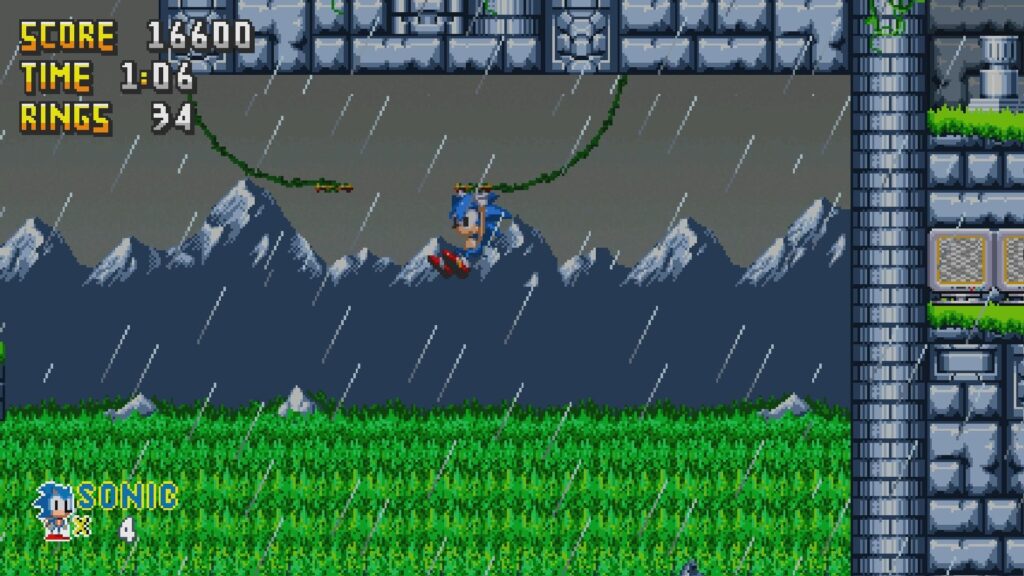
LakeFepard’s “Not So Simple Sonic Worlds” seems to be gaining a lot of traction this SAGE, and I’m not 100% sure why. I guess it’s probably because it contains a version of the Drop Dash, but it’s implemented in a weird way that I don’t entirely agree with. Anyway, that’s a subject for another day; as far as Sonic Skies is concerned, this is another perfectly passable Sonic fan game. It actually kind of reminds me of an older, long-canceled fan game called “Emerald Ties” — the Green Hill Zone level near the beach, followed by ancient ruins in the rain. Granted, you can also use that to describe games like Sonic 3D Blast, so it’s not like it’s exclusive or unique to either of these games. Skies is a perfectly enjoyable Sonic fan game, though it does commit a cardinal sin of Sonic level design: stationing enemies in the middle of long stretches of road. Once you set a player’s expectation that they are on a running segment, betraying it by sticking an enemy in the middle of that section just means they’re going to run in to it face first, totally unprepared. That’s bad!
Sonic the Hackable
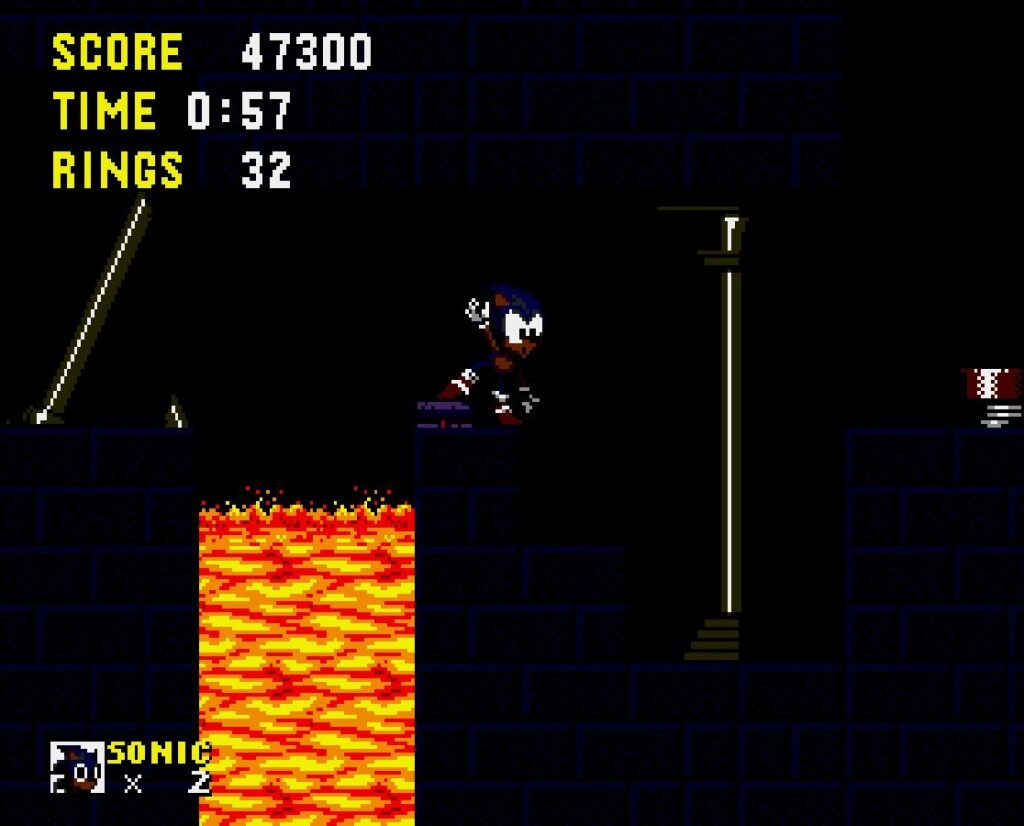
At first glance this might just seem like the original Sonic the Hedgehog, but it’s actually kind of fun the way changes slowly build up over time. Eventually the same old Green Hill gives way to broken bridges, water sections, Sonic 4-styled boost pads, and more. A particular highlight is Marble Zone Act 2, where the water effect is modified to create sections of the stage that are shrouded in shadow, making it difficult to see certain obstacles. Cute twists like that are what make this stand out.
This review slew is dedicated to the delisting of “Sonic Rush Legacy” from SAGE 2018, which apparently submitted the exact same booth as last year, with all the files still having 2017 build dates. Gone, but not forgotten. Well, maybe.



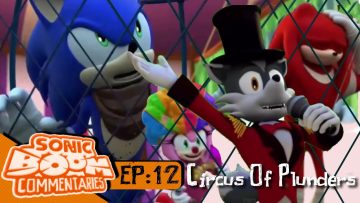
![[ID: 5U-IX2ZZIOc] Youtube Automatic](https://lastminutecontinue.com/wp-content/uploads/2023/04/id-5u-ix2zzioc-youtube-automatic-360x203.jpg)
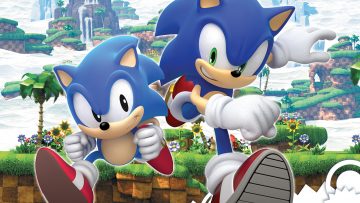
![[ID: cdKEKtz8Osc] Youtube Automatic](https://lastminutecontinue.com/wp-content/uploads/2024/02/id-cdkektz8osc-youtube-automatic-360x203.jpg)